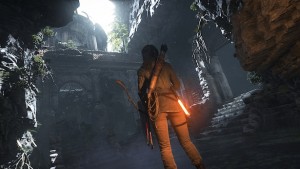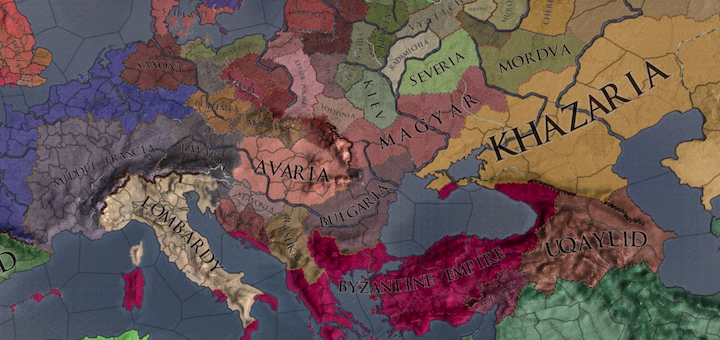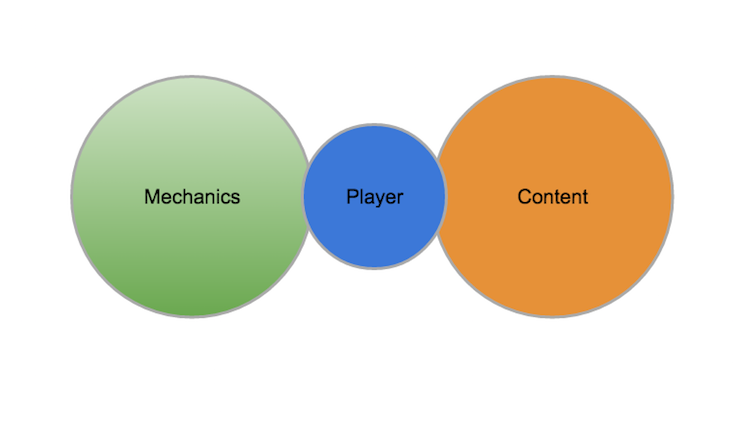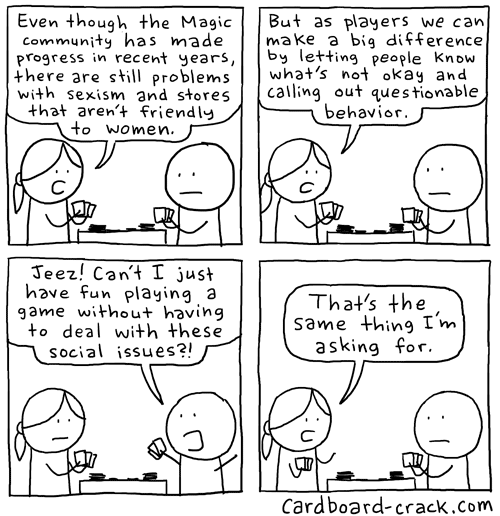I finished playing Rise of the Tomb Raider this past week, and while I’ve written about the game a lot this month, I wanted to devote at least one more (but, most likely, not the last) post to exploring my thoughts upon completing the game–a review, of sorts.
I’ve written about the manner in which the game constructs daughterhood, the manner in which fathers and mothers are depicted in the game, and the manner in which the game explores (or doesn’t explore) representations of trauma, and in thinking about these things and in playing the game I’ve found myself, ultimately, preoccupied with the way the game tells Lara’s story and with the way it represents her and the other characters through such a telling. And it would seem that I’m not the only one making note of such things.
 Indeed, several people who have reviewed the game have praised the manner in which it develops Lara Croft as a character; Lucy O’Brien of IGN, for one, says, “Minute-to-minute, Lara shines. She’s confident and smart, and reacts to danger with an action hero’s calmness and intuition. Yet she’s scarred by her last adventure, so she carries a sort of charismatic weariness that tinges her quips with self-deprecation. As a character, Lara Croft has never been so endearing.” And O’Brien continues this line of thinking by comparing Lara’s characterization in this game to that of its 2013 precursor: “Her ambitions are more complex, too. This time round she’s driven by obsession, not survival, and for the first time we see her in shades of grey. Unlike 2013’s Tomb Raider, I wasn’t wincing at her constant broken bones—she’s now a formidable fighter who inflicts more than she takes—but I did see the cracks in her moral compass.” O’Brien, then, sees the Lara Croft of Rise of the Tomb Raider as being a complex character, one worthy of praise due to the manner in which she is rendered.
Indeed, several people who have reviewed the game have praised the manner in which it develops Lara Croft as a character; Lucy O’Brien of IGN, for one, says, “Minute-to-minute, Lara shines. She’s confident and smart, and reacts to danger with an action hero’s calmness and intuition. Yet she’s scarred by her last adventure, so she carries a sort of charismatic weariness that tinges her quips with self-deprecation. As a character, Lara Croft has never been so endearing.” And O’Brien continues this line of thinking by comparing Lara’s characterization in this game to that of its 2013 precursor: “Her ambitions are more complex, too. This time round she’s driven by obsession, not survival, and for the first time we see her in shades of grey. Unlike 2013’s Tomb Raider, I wasn’t wincing at her constant broken bones—she’s now a formidable fighter who inflicts more than she takes—but I did see the cracks in her moral compass.” O’Brien, then, sees the Lara Croft of Rise of the Tomb Raider as being a complex character, one worthy of praise due to the manner in which she is rendered.
Philip Kollar of Polygon, while not as generous in his praise of the game as O’Brien is, still is able to look past its shortcomings to, ultimately, view it in a positive light: “There are some rough edges to Rise of the Tomb Raider–weaknesses in its writing, goofiness in its animation and so on. But these never add up to much of concern in a game so certain of its goals and confident in its execution.” And because these “rough edges” never add up to much of a concern for Kollar, he argues that, even though the game feels formulaic, “for now, it’s a formula I’m happy revisiting.”
 Yet, while Kollar is happy revisiting this formula, he does admit that the game’s “overarching narrative” is one of the weakest things about the game and that Lara Croft’s character development “comes across as forced and, frankly, not terribly interesting.” But, again, even though Kollar points out these weaknesses, he isn’t all that concerned about them because he believes that what “saves Rise of the Tomb Raider from an otherwise shallow story is that, well, it just doesn’t depend on that story much. Aside from a couple of big plot moments, cutscenes in Rise are blessedly short, and you’re generally allowed to keep moving during dialogue between characters. The gameplay comes first here, and it’s that gameplay that makes Rise of the Tomb Raider so great.”
Yet, while Kollar is happy revisiting this formula, he does admit that the game’s “overarching narrative” is one of the weakest things about the game and that Lara Croft’s character development “comes across as forced and, frankly, not terribly interesting.” But, again, even though Kollar points out these weaknesses, he isn’t all that concerned about them because he believes that what “saves Rise of the Tomb Raider from an otherwise shallow story is that, well, it just doesn’t depend on that story much. Aside from a couple of big plot moments, cutscenes in Rise are blessedly short, and you’re generally allowed to keep moving during dialogue between characters. The gameplay comes first here, and it’s that gameplay that makes Rise of the Tomb Raider so great.”
But this is something that I find myself struggling with—the fact that a game like Rise of the Tomb Raider can be viewed as being “so great” even though its story, as Carolyn Petit says, “is predictable and derivative…It’s all very familiar, standard adventure story stuff.” I struggle with the argument that Rise of the Tomb Raider can be “so great” because it doesn’t depend on the story it’s crafting. In other words, I have a hard time separating the game’s story from the game itself, as if the game’s predictable, derivative, pedestrian mode of storytelling somehow exists outside of the game or somehow exists as if it is separate from the game. This is something with which I can’t reconcile, and it’s something with which I don’t think we should reconcile–because the game’s gameplay and its story are not separate entities but both part of the same thing. They are inexorably intertwined.
 So, sure, while playing the game, I’ve enjoyed climbing up walls of ice and killing wolves and bears and solving puzzles. And, sure, as Petit says, there are also “some improvements in the way Lara is presented in Rise of the Tomb Raider. By default, she now wears clothing that’s much more appropriate for the harsh elements that she finds herself in than she did in the previous game.” But the game tells a tired story, one that’s been rehashed over and over again in the adventure genre, and one made all the more flat through the one-dimensional rendering of Lara Croft’s motivation and development throughout the game. And I have a hard time thinking that a game is “so great” when it tells a story that is so uninspired.
So, sure, while playing the game, I’ve enjoyed climbing up walls of ice and killing wolves and bears and solving puzzles. And, sure, as Petit says, there are also “some improvements in the way Lara is presented in Rise of the Tomb Raider. By default, she now wears clothing that’s much more appropriate for the harsh elements that she finds herself in than she did in the previous game.” But the game tells a tired story, one that’s been rehashed over and over again in the adventure genre, and one made all the more flat through the one-dimensional rendering of Lara Croft’s motivation and development throughout the game. And I have a hard time thinking that a game is “so great” when it tells a story that is so uninspired.
I initially set out, in this post, to write a review of the game, but it seems that what this has morphed into is more of a review of the way the game has been reviewed so far. Petit reflected on this as well after her original review “raised accusations that [she’s] ‘doing it wrong,’ as if there is one right way to approach and evaluate games, and this is not it.” And I think she raises some important points regarding the way we think about what we expect from games and what we, then, expect from reviews of them:
I have no issue whatsoever with some reviewers finding much to admire or praise in this game. Personally, I don’t think there’s anything remarkable about the gameplay systems in Rise of the Tomb Raider. Yes, it checks the boxes we’ve come to expect from open-world action-adventure games. It has brutal combat. It has resource collection and crafting, skills and weapon upgrades. You could say that it does all of these things competently, but none of these are things that distinguish this game in any meaningful way, and even if we loved games that gave us these things just for the sake of these things themselves the first time or five times or ten times we played such games, isn’t there, at a certain point, diminishing returns on that? For the mechanics to have value in and of themselves, after a certain point, don’t they have to be innovated upon, applied in some way we haven’t seen or experienced before, or done noticeably better than they’ve been done before? Does Rise of the Tomb Raider really distinguish itself in these ways? I can see one or five or ten of the people who initially reviewed this game for major sites feeling that it does. Even 20. But all 43 of them?
These seem like valid and important questions for us to be asking, questions that I, too, find myself wondering about. I also find myself agreeing with Petit’s argument that we “do a disservice to games themselves and to the people who play them when we don’t expect more from games, when we don’t think about them from a variety of perspectives.” And I do expect more from games—I expect more from Rise of the Tomb Raider, I expect more from Lara Croft, and I expect more from those of us playing and thinking about the game—and such expectations, as Petit puts it, do not come “from a place of hate, but a place of deep love.” But it’s a love rooted not in complacent acceptance of what a game is but in critical engagement with what a game could be. And Rise of the Tomb Raider could be so much better.





One thought on “Full Review of Rise of the Tomb Raider: Or, Reflecting on What it Means to Review and Critique Games”
I find myself wondering how the story might have been different if the game had been made with a brand new character. Could the story have been more compelling, more innovative, less safe and/or less Oedipal if the writers and developers hadn’t had to consider the presentation of ‘Lara the character in a story’ alongside ‘Lara the condensed symbol of a certain portion of video game history’?